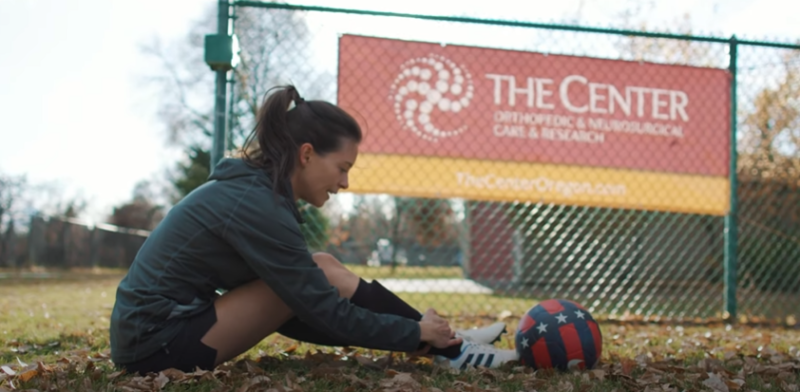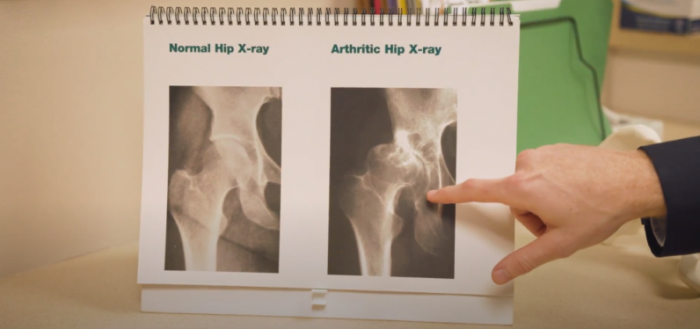
We are all prone to injuries such as ankle sprains, muscle strains, back pain, etc so it is important to understand proper at-home injury care. Knowing when to use heat or ice on an injury can help decrease your healing time and pain levels.
Using ice and heat for injuries can provide relief and aid in the healing process when used correctly and in moderation. However, it’s crucial to be aware of the risks associated with overusing these methods. Always follow the recommended guidelines for duration and application, and if you’re unsure, consult a healthcare professional for guidance. Remember that each injury is unique, and a healthcare provider’s advice can ensure the best approach for your specific situation.
WHEN TO USE ICE
Ice is typically used for acute injuries, such as sprains, strains, or bruises. Applying ice helps to reduce swelling by constricting blood vessels and numbing the area, thereby alleviating pain and inflammation. It is most effective when applied within the first 48 hours after the injury occurs, in intervals of 15-20 minutes with breaks in between to prevent skin damage.
- Benefits of Ice: Ice application, also known as cold therapy or cryotherapy, can help in the following ways:
- Pain Reduction: Cold temperatures can numb the affected area and reduce pain sensations.
- Inflammation Control: Ice can help minimize swelling by constricting blood vessels and reducing blood flow to the injured area.
- Proper Application:
- Use ice packs, cold compresses, or even frozen vegetables wrapped in a cloth to avoid direct contact with the skin.
- Apply ice for about 15-20 minutes at a time, allowing the skin to return to its normal temperature between applications.
- Use ice within the first 48 hours of an acute injury, like a sprain or strain.
- Risks of Overuse:
- Tissue Damage: Prolonged exposure to ice can cause frostbite or damage to the skin and underlying tissues.
- Reduced Blood Flow: Excessive cold can lead to prolonged constriction of blood vessels, potentially delaying the healing process.
- Nerve Sensitivity: Some individuals may be more sensitive to extreme cold, leading to discomfort or nerve irritation.
Acute Injuries
An acute injury is sudden and spontaneous, resulting from a fall, hit, or another type of trauma. The first rule of thumb is to never use heat on an acute injury. That extra heat can cause an increase in inflammation and delay proper healing. Applying an ice pack within the first 48 hours of an injury can help numb pain, relieve inflammation, and limit bruising. Keep your ice pack moving to avoid ice burns and do not exceed 20 minutes.
A common acute injury is a sprained ankle or knee injury. The RICE method is an important protocol to help relieve pain, reduce swelling, and counteract the body’s initial response to the injury.
RICE stands for rest, ice, compression, and elevation.
Rest
Stop using the injured body part! Protect the area and avoid any activity that is painful or may have caused the injury. Continued activity could cause further damage.
Ice
Use ice for the first 48-72 hours after an injury. Apply ice several times a day for 20 minutes at a time, followed by one hour “off.” The cold will contract injured capillaries and blood vessels to help stop internal bleeding. Do not apply ice directly to the skin.
Compression
Wrap the injured body part firmly with an elasticized bandage, compression sleeve, or cloth – especially when you are more active. This will help speed up healing time by reducing swelling around the injury.
Elevation
Elevate the injured body part above the level of your heart to decrease swelling and joint pain.
WHEN TO USE HEAT
Heat is a great treatment for chronic conditions such as overuse injuries, and before participating in activities to help relax and loosen tissues and increase blood flow. Do not use heat after an activity, acute injury, or where swelling is involved. Swelling is caused by bleeding in the tissue, and heat only draws more blood to the area, which can increase healing times.
Be sure to use heating pads in moderation to avoid burns, and never leave one on for extended periods of time or while sleeping.
- Benefits of Heat: Heat therapy, also known as thermotherapy, can be advantageous in the following ways:
- Muscle Relaxation: Heat can help relax tight muscles and improve flexibility.
- Blood Circulation: Applying heat can increase blood flow to the injured area, aiding in the delivery of nutrients and removal of waste products.
- Proper Application:
- Use warm towels, hot water bottles, or heating pads set to a comfortable temperature.
- Apply heat for around 15-20 minutes at a time, allowing the skin to cool down before reapplying.
- Heat is generally more suitable for chronic conditions or injuries that don’t involve significant inflammation.
- Risks of Overuse:
- Burns: Prolonged or excessive heat application can lead to burns, especially if the heat source is too hot or direct skin contact is made.
- Increased Inflammation: Applying heat to an already inflamed area can exacerbate swelling and discomfort.
- Masked Symptoms: Heat can temporarily alleviate pain, potentially masking the severity of an injury and leading to further damage.
Using Ice or Heat for Different Conditions
Applying ice or heat can be beneficial for various conditions, depending on the nature of the injury or discomfort. Here are guidelines for when to use ice or heat for specific conditions:
- Ice Therapy:
- Arthritis: Ice therapy can be helpful during flare-ups of arthritis, especially when joints are swollen, hot, and inflamed. Applying ice for about 15-20 minutes at a time can help reduce pain and inflammation. However, ensure there is a cloth or towel between the ice pack and your skin to prevent frostbite.
- Headaches: If you’re experiencing a tension headache or migraine, applying a cold pack or ice wrapped in a cloth to your forehead or the base of your skull can help constrict blood vessels and alleviate pain.
- Tendonitis: Tendonitis involves inflammation of tendons. Applying ice to the affected area for 15-20 minutes multiple times a day can help reduce inflammation and provide relief. Ice can help numb the pain and reduce swelling.
- Muscle Strain: In the initial stages of a muscle strain, applying ice can help reduce swelling and pain. Ice should be applied for 15-20 minutes at a time, several times a day, for the first 48 hours after the injury.
- Heat Therapy:
- Arthritis: For chronic arthritis pain, applying heat can help relax muscles and improve blood flow to the affected area. Heat therapy is especially beneficial when joints are stiff in the morning or after prolonged inactivity. Use a warm towel, heating pad, or warm bath for 15-20 minutes.
- Headaches: If you’re dealing with tension headaches or tight neck muscles, applying moist heat (warm towel or warm shower) to the neck and shoulders can help relax the muscles and ease discomfort.
- Tendonitis: After the initial inflammatory stage, applying heat can promote blood circulation to the affected area, aiding in healing. Use a warm compress for 15-20 minutes, a few times a day.
- Muscle Strain: After the first 48 hours of a muscle strain, applying heat can help relax tight muscles and improve blood flow to the injured area. Use a warm compress or a warm bath to soothe the muscles.
How to safely apply ice or heat on an injury
Ice:
- Preparation: Wrap the ice pack or ice cubes in a thin cloth or towel to create a barrier between the ice and your skin. This prevents frostbite or ice burns.
- Timing: Apply ice for 15-20 minutes at a time. Avoid prolonged contact to prevent tissue damage.
- Breaks: Allow your skin to return to normal temperature before reapplying ice. Aim for at least a 20-minute break.
- Elevation: Elevating the injured area while applying ice can help reduce swelling further.
- Frequency: Apply ice every 1 to 2 hours during the initial 48 hours after the injury.
Heat:
- Moderation: Ensure the heat source is not too hot to avoid burns. Use a warm, not hot, setting on heating pads or warm towels.
- Protection: Always use a cloth or towel between the heat source and your skin to prevent burns.
- Timing: Apply heat for 15-20 minutes. Longer exposure can lead to skin irritation.
- Breaks: Give your skin time to cool down between heat applications, typically for at least 20 minutes.
- Moist Heat: For moist heat, use a damp cloth or towel over the heat source to add moisture and prevent excessive dryness.
General Precautions:
- Skin Check: Regularly inspect your skin during and after application to ensure it’s not becoming too red or irritated.
- Sensitivity: If you have reduced sensitivity in the affected area, be cautious about using extreme temperatures, as you might not feel discomfort until it’s too late.
- Individual Response: Some people may prefer heat over ice, or vice versa. Pay attention to how your body responds and adjust accordingly.
- Consultation: If you have circulatory problems, diabetes, or any condition affecting skin sensation, consult a healthcare professional before using ice or heat.
Signs of a more serious injury include:
- Popping or crunching sound
- Severe pain or swelling
- Cannot stand or support the injured area
- Instability in joint
Remember that both ice and heat are meant to be used as temporary relief measures. If your pain persists or you experience any of the above, make an appointment with one of our orthopedic specialists or use The Center’s NOWcare walk-in clinic, open Monday – Friday, 8 a.m. – 4 p.m. No appointment necessary.
Stay informed about upcoming webinars and events, and gain valuable insights on leading a healthy, pain-free life from our experts by subscribing to our monthly newsletter. Click the button below to join!





